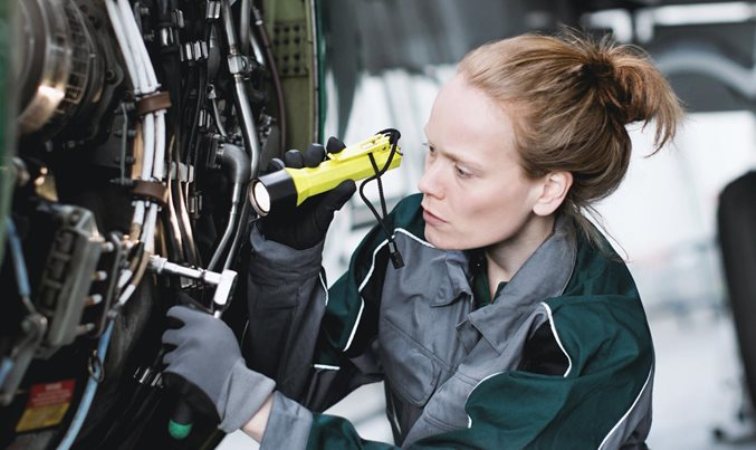
Call to action: How A&D companies can build the workforce of the future
The aerospace and defence (A&D) sector rightly prioritizes pursuing top digital talent because it relies on the most cutting-edge technologies and scientific expertise. Sector leaders acknowledge that acquiring and applying additional skills in advanced analytics and other rapidly evolving technologies is crucial for the industry’s future competitiveness. Yet there is a growing gap between supply and demand for digital talent. The A&D sector competes against an increasingly diverse set of employers, including large technology companies, start-ups, and blue-chip companies, that also have a growing interest in digital talent. Recognizing this heightened competition for talent, A&D leaders are taking bold actions to attract the best people.
McKinsey recently surveyed some A&D leaders all members of the Aerospace Industries Association to learn about their priority talent issues. The survey results portray a sector that is conscious of the urgency to increase digital literacy and accelerate efforts in this area. Further, the survey reveals that A&D companies face many of the same challenges in recruiting and retaining digital talent found in other tech-oriented sectors.
Many survey respondents are focused on managing the acute disruptions caused by the COVID-19 pandemic. In addition to talent challenges, including an increase in remote working, leaders are dealing with a drastic decline in air travel and aerospace sales, as well as a value shift from hardware to software. What’s more, defence budgets are coming under pressure as the pandemic shifts government priorities. These talent challenges are critical concerns for an industry already facing structural headwinds.
The COVID-19 crisis could jump-start important efforts to address talent issues by prompting A&D companies to reimaging how they work, especially how they help employees develop and deploy new skills. This article describes the nature of the challenge ahead and suggests how A&D companies resilient and adaptable by nature can use their muscles to prepare for it. Those companies that move quickly and act now will be well prepared for the next normal, where the work world will differ profoundly.
Finding digital talent
A&D companies face daunting odds in the pursuit of top digital talent, especially because the pool of available and qualified talent is quite small. In the greater Washington, DC, area, where several major A&D companies are headquartered, demand for tech talent exceeds supply by nearly 2:1.
To understand the breadth and depth of digital skills across A&D and competing industries, we interviewed industry executives and conducted an outside-in analysis of nearly 1.5 million job postings and employee profiles.
We found increasing demand for workers with digital and analytics skills. We also began to see the extent to which A&D companies are lagging behind their peers in other sectors, especially the technology industry, in attracting and retaining workforces with these skills. A majority of companies surveyed expect positive impact from digital trends but feel unprepared to face them.
Other talent insights include the following:
- A&D companies have fewer workers with digital and analytics skills.Only about 30 to 43 percent of their employees fall into this category, compared with 62 percent at tech companies.
- A&D is facing increased competition for digital talent, especially from tech companies.Almost 50 percent of survey respondents list tech and advanced electronics companies as their biggest competitors for talent, reflecting the increasing overlap between skills needed in the tech industry and those required in A&D.
- A&D must do more to highlight industry strengths.Many prospective employees do not believe that the sector offers sufficiently exciting opportunities and development paths. Overall, 39 percent of survey respondents agree that providing compelling careers is the biggest challenge to developing and retaining talent. Survey respondents also describe their organizations as slow to allocate talent and bureaucratic in their approach. These factors could prevent them from attracting recent workforce entrants, who often seek opportunities to deploy their digital skills rapidly and do not want to wait to rise through organizational ranks.
- Within A&D, the strategic requirements of HR are growing.There is general agreement that the A&D industry’s talent-engagement strategies must improve to remain competitive. This necessarily must begin with reimagining how companies can better integrate the human-resources function, allowing it to be a strategic partner in the business. Fewer than 50 percent of A&D companies are confident that their approach to talent management will enable them to outperform the competition over the next five years.
- A&D can do more to scale remote work.The COVID-19 crisis has accelerated remote work. Although 22 percent of survey respondents reported that their companies were well prepared to respond to COVID-19, leaders overwhelmingly indicated that they have had to adjust to working in ways they never imagined possible. In light of this challenge, A&D companies have moved quickly to implement new and alternative ways of working. For long-term success, A&D companies must identify sustainable remote-work models and formalize their aspirations.
Recent developments, including the global pandemic and a wave of social unrest, have challenged many fundamental assumptions in business and society. Many people want and expect profound changes. To ensure the A&D sector’s continued strength, A&D companies are reimagining themselves and making bold, transformational changes, especially with regard to how they organize themselves, appeal to digital workers, and motivate their workforces. This moment offers a chance to make the transformational change needed to modernize a sector that is ready for its next inflection point.
McKinsey